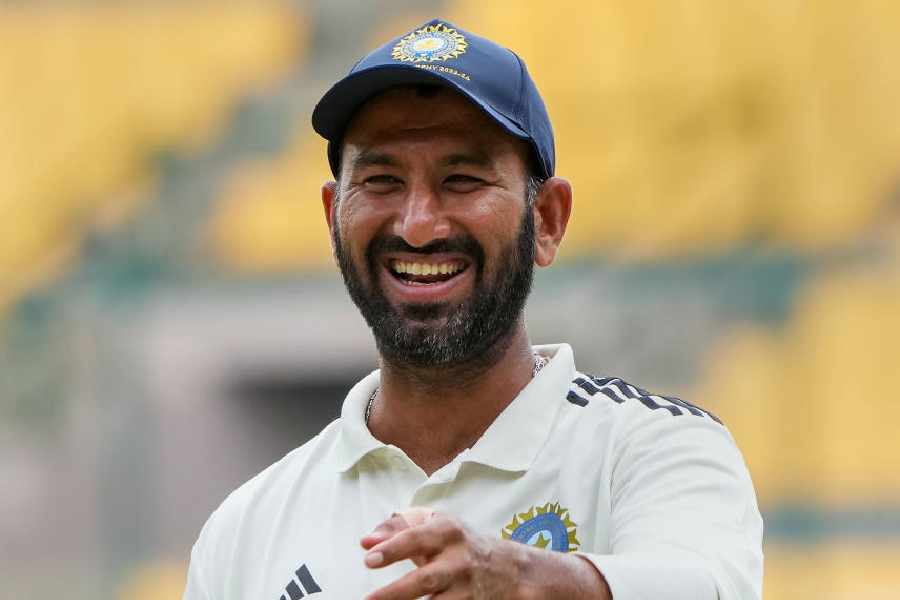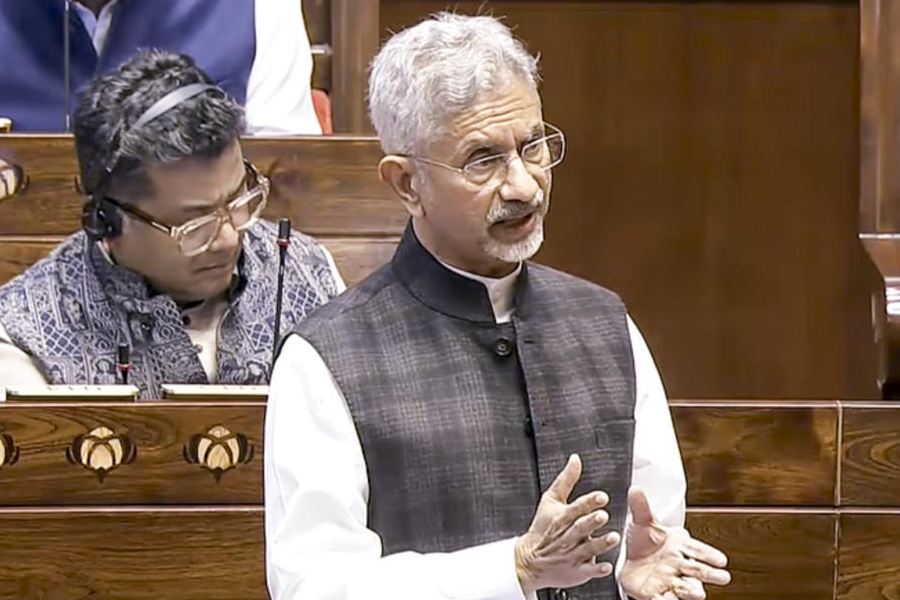Retirement thoughts had first crossed Cheteshwar Pujara’s mind when Shiv Sundar Das, the stand-in chairman of the selection committee, informed him of their decision to drop him for the tour of the West Indies in 2023.
He had a poor run in the previous six Test matches, culminating in the World Test Championship final against Australia at The Oval, and the selectors had envisaged the way forward with a “younger side”.
But he wanted to continue playing for the love of the game. “... one day — let’s face it — my career, like everything else in this life, will come to an end,” he was quoted as saying in his wife Puja’s memoir, The Diary of Cricketer’s Wife.
He battled on for another couple of years on the domestic circuit before finally deciding to hang his boots on Sunday. For someone who enjoyed representing Saurashtra in first-class cricket in sync with his exploits at the international level, the legacy he leaves behind will be hard to replicate.
In an era when most batters would race against time to redefine their game with the demands of white-ball cricket, Pujara was an exception. He wasn’t technically perfect or authoritative and dominant as some others of his era, but he could blunt any attack with precision and determination for hours without battling an eyelid.
It was perhaps best exemplified by his innings on the final day of the Gabba Test in January 2021, when India knocked off 328 runs to secure a famous win though Rishabh Pant was the X-factor with his unbeaten 89.
Nevertheless, No.3 Pujara stood like a rock for 314 minutes, refusing to grimace as the Australian pace trio of Mitchell Starc, Pat Cummins and Josh Hazlewood landed close to a dozen blows on his body, leaving him with a swollen finger and bruised torso. Pujara showed that he could gulp down the pain, never flinching in the face of pace during his 56. His immense contribution can never be forgotten as India clinched their first Test series Down Under following a disastrous 36 all out in the first Test. He returned India’s most successful batter with 271 runs in four Tests.
When India won their first series in Australia in 2018-19, Pujara had once again topped the batting charts with 521 runs in seven innings. There were three centuries, including an epochal 193 in the final Test in Sydney. As the Indians struggled on their next tour without Pujara, earlier this year, the Australians couldn’t hide their glee.
“I am happy that Cheteshwar is not here. He is obviously someone who bats time and spends a lot of time at the crease and makes you earn his wicket every time,” Hazlewood said.
India’s series triumphs in the West Indies and England in 1970-71 had an epochal scale to it, the two consecutive series triumphs in Australia should also be spoken about in the same breath, achieved mainly because of Pujara. His brilliance in 2018-19 even prompted an overtly worn out Nathan Lyon to ask, “don’t you get bored of batting.”
Pujara didn’t but the Australians had been left tired of his presence at the crease. But it hasn’t been just about his abilities to stand up to the fast bowlers’ vengeance in overseas conditions, he excelled on the dust bowls at home too, having nurtured his game on spinning tracks in the domestic circuit.
He aggregated 43.47 and scored six hundreds in matches India won overseas. He remained the unsung hero as he always lacked the flamboyance and charisma of a star player. Indian cricket had been searching for Rahul Dravid’s replacement at No. 3 until Pujara made it his own with a century in Hyderabad, batting for the first time at his favourite position in 2012.
Test, India are yet to find his suitable substitute. Shubman Gill never achieved the desirable consistency until he switched to the more contentious No. 4 slot since becoming captain. Until India’s manages to f ind a suitable batter to inherit his spot in the batting order, the collapses will continue to bother the think-tank. It has been more than 26 months, but the hunt continues.











